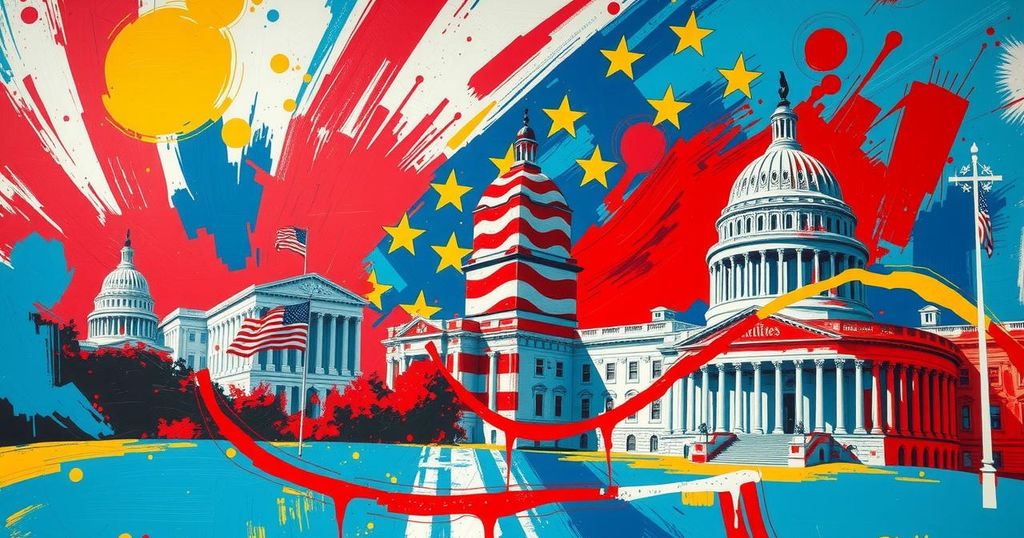cat 1
cat 2
cat 3
cat 4
2024ELECTION, BLACKVOTERS, DEMOCRACY, DEMOCRATICNOMINATION, DEMOGRAPHICS, ENTHUSIASM, GALLUPPREDICTIONS, GOP, GOVERNMENT, KAMALAHARRIS, LEGISLATURE, NATIONALPOLL, POLICIES, POLITICS, POLLS, PRESIDENTIALELECTION, REPUBLICANNATIONALCOMMITTEE, UNIVERSITYCAMPUSES., USPOLITICS, YOUNGVOTERS
Liam Brooks
0 Comments
Public Trust in Government: 1958-2024
As of April 2024, public trust in the federal government has increased to 22%, up from 16% in 2023, although this remains low historically. Trust levels show stark contrasts among political party affiliations and racial groups, with Democrats generally more trusting than Republicans. Rates of trust have fluctuated over decades due to political events, maintaining significant gaps within various demographics.
The landscape of public trust in government has shifted noticeably in recent years, albeit still showing low overall levels. According to a recent report, as of April 2024, only 22% of Americans believe they can trust the federal government in Washington to do what is right just about always or most of the time. This marks a slight jump from last year’s record lows, where just 16% felt similarly, highlighting an ongoing trend of skepticism about government institutions that has lingered for decades.
Looking back, the issue of public trust dates back to when the National Election Study began measuring it in 1958. At that time, around three-quarters of Americans expressed confidence in their government to do the right thing most times. However, various political and cultural events, especially intensified during the Vietnam War in the 1960s and later challenges like Watergate in the 1970s, set the stage for a continued decline in trust.
Recovery moments did occur, particularly in the mid-1980s during a period of economic growth. Yet, trust in government again hit a downturn in the mid-1990s, though the late 1990s saw a resurgence as the economy thrived. Interestingly, following the 9/11 attacks, public trust hit a peak not seen in three decades, only to sink back down quickly afterward. Since 2007, the metrics for trust have generally not exceeded 30%, a concerning norm for policymakers.
A deeper dive into party lines reveals stark contrasts. Currently, 35% of Democrats and those leaning Democratic report they trust federal government operations, while a mere 11% of Republicans feel the same. Notably, there has been some uptick in trust among Democrats since last year, but Republicans have shown little change in their perspective.
A historical trend highlights that trust in government tends to be higher among those from the party that occupies the White House. Notably, Republicans have shown more volatility in trust levels in response to shifts in political leadership, expressing greater skepticism during Democratic administrations. Conversely, Democrats often display steadier trust levels, regardless of which party is in power.
Racial and ethnic trends reveal interesting disparities in trust levels. Among adult demographics, 36% of Asian Americans, 30% of Hispanics, and 27% of Black Americans express trust in the government most of the time or just about always. This contrasts sharply with just 19% of White adults who feel the same way. Past trends during Democratic presidencies saw higher trust levels among minorities compared to White individuals, while the opposite was true during many Republican administrations.
In summary, while there’s been a slight uptick in public trust towards the government, levels remain relatively low, and persistent disparities among different demographics continue to influence public perception. The findings prompt concerns about the implications for future governance and public engagement with civic institutions.
In conclusion, public trust in the federal government has seen a minor increase, but it remains at low levels with ongoing disparities across party lines and demographic groups. Factors such as political events and leadership changes influence trust significantly, often revealing stark contrasts between Republicans and Democrats, as well as among different racial and ethnic communities. This data could have profound implications for how the government interacts with its citizens moving forward.
Original Source: www.pewresearch.org




Post Comment